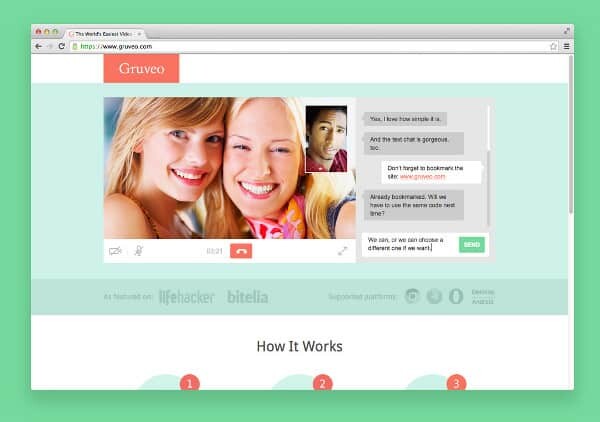 [You should probably remember Art Matsak. He provided his own thoughts on why Flash is enough. Guess what? His startup, Gruveo, has just converted to using WebRTC. I asked him for the reasons, and he was happy to share them here]
[You should probably remember Art Matsak. He provided his own thoughts on why Flash is enough. Guess what? His startup, Gruveo, has just converted to using WebRTC. I asked him for the reasons, and he was happy to share them here]
Five months ago, I argued in another guest post at BlogGeek.Me that it might be too early to embrace WebRTC for a consumer-oriented service. After all, WebRTC is not supported in IE and Safari, the mandatory video codec is still to be agreed upon, and the existing implementations are oftentimes buggy.
The verdict was in: Gruveo – our service for ultra-easy, anonymous video calls – was not going to adopt WebRTC anytime soon.
Mobile Changes Everything
On July 15, a top to bottom rewrite to Gruveo was released that leverages WebRTC to enable easy video calls on desktop and Android. User feedback has been overwhelmingly positive so far, and we’re really glad we switched over.

So what has changed during these five months? One word: mobile.
In March, several important changes were submitted to the WebRTC codebase that finally added iOS video calling support. Before that, you had to rely on some crazy hacks to make WebRTC video work on iOS. Not anymore.
To put things in context, we had been looking for a way to bring Gruveo to mobile for quite a while, and it’s really, really hard with Flash. There is Adobe AIR, but it doesn’t offer acoustic echo cancellation on mobile. We even looked into OpenTok’s old approach of bridging an RTSP iOS app to Flash’s RTMP protocol with Wowza but were deterred by its complexity.
Addition of video support to WebRTC’s iOS codebase was a wake up call to us. Compared to the ability to bring our service to mobile, lack of support in IE and Safari was truly a minor nuisance. Besides, about 80% of our existing desktop users were already enjoying Gruveo in Chrome, Firefox or Opera.

We’re in the Business of Easy
Over the past five months, we also went through a kind of a paradigm shift. We realized that the value of Gruveo is in its ease of use, not the “no install” part. This means that browser support is nothing more than an icing on the cake as long as WebRTC enables us to develop native apps for all major platforms.
In effect, WebRTC is giving us a free, industry-standard toolbox for bringing our vision for easy video calls into reality.
So what’s next for Gruveo? This summer, we are releasing an iOS app and expect to open the beta testing program soon. A few other major announcements are also underway, but all in its due time.
And if there is only one lesson we learned, it is that you shouldn’t be afraid of change. So if you haven’t already, go ahead and start looking into this WebRTC thing because it is the future.

Thanks for sharing. Any comment re battery consumption?
The battery is definitely drained faster than when you have hardware-assisted video encoding and decoding (e.g. FaceTime and H.264). But it’s still more or less acceptable.